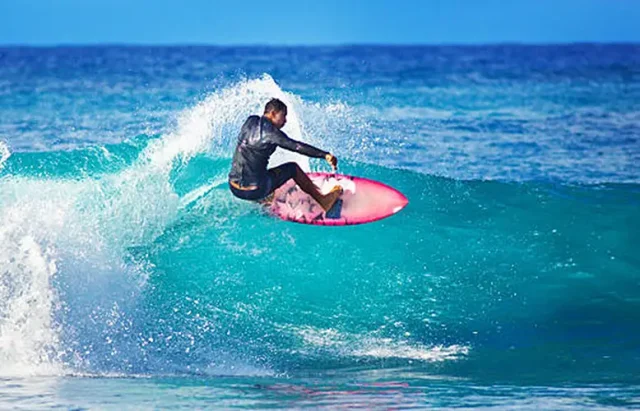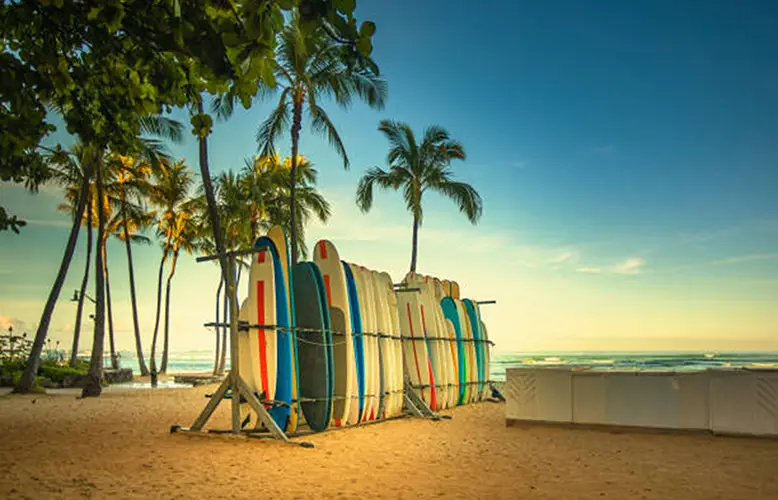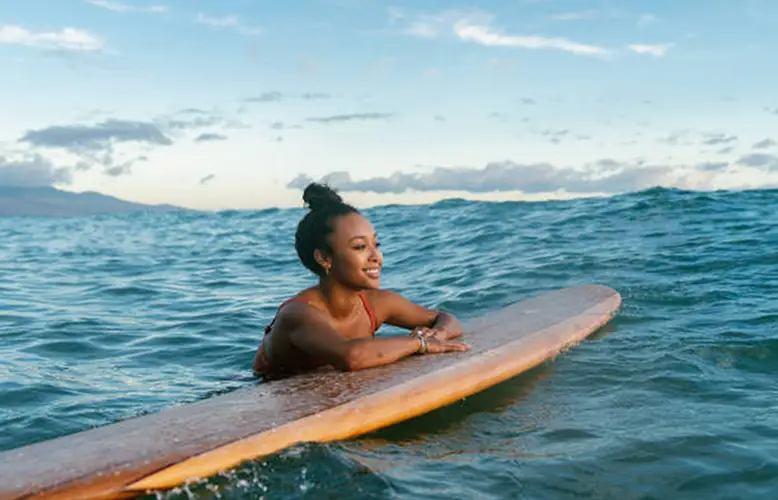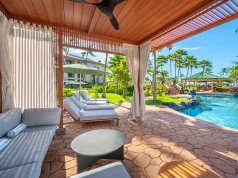
Hawaiian surfing is not merely a sport, but a deep cultural activity with centuries of Hawaiian history and spirituality behind it. The sport of surfing is referred to locally as heʻe nalu (wave sliding), and has been a part of community life, royal ritual, and individual expression since time immemorial. Surf lessons on the islands today acknowledge this rich history, and therefore, students get much more than a lesson on the mechanics of catching waves.
Surf schools in Hawaii are very deliberate in their cultural education. New surfers are introduced to the spiritual connection ancient Hawaiians had with the ocean, the traditional design of surfboards, and guidelines for respecting people and the environment. These schools teach the tales of such mythical characters as Duke Kahanamoku and why aloha (love, compassion) and pono (righteousness) are so important in everyday surf life. That is why, booking with this Hawaii surf school, you will likely find your instructors mixing the necessary safety and technique with the descriptions of the deeper meaning of surfing.
Focusing on the Spiritual and Social Origins of Surfing

The Hawaiians had surfing as the main part of their society long before it became a global phenomenon. Both chiefs and commoners were surfers, and they could ride waves on huge wooden boards- olo in the case of aristocrats and alaia in the case of the rest of the population. To most people, the aim of surfing was not just sporting but also spiritual. Riding waves was a way of honoring the gods, celebrating special events, as well as a way of being one with the ocean (known as kai). The making of boards and even the process of surfing itself were frequently accompanied by rituals, prayers, and blessings.
The modern surf lessons in Hawaii tend to honor these traditions. To emphasize the fact that surfing is a sacred activity, instructors can start classes with an oli (chant) or a minute of appreciation to the ocean. The students are made aware of the spiritual meaning of some of the beaches and tides and are taught to seek permission before entering the water- a tradition that has emerged out of the Hawaiian worldview of the ocean as a living and powerful entity.
Learning Respect: Manners, Society, and Aloha
One of the first things that one learns in any Hawaiian surf lesson is respect, respect to other surfers and respect to nature. Aloha is not just a greeting in Hawaii, but it is a concept of care, compassion, and mutual respect, which are the core of the surfing experience in Hawaii. Lessons include the proper lineup etiquette, the right of way, and the necessity to share waves. It is also taught to students to be polite and greet and recognize other people in the water, a communal spirit that has been a hallmark of Hawaiian surf culture since time immemorial.
A lot of teachers, such as those in Stoke Drift, teach lessons on malama (to care for) the environment. This is interpreted to include things such as maintaining clean beaches, not trampling on coral, and not disturbing local wildlife. The lessons also cover the concept of kuleana (responsibility), which reminds new surfers about their responsibility in taking care of the physical and cultural environment of Hawaii.
Getting in Tune with Local History and Surf Iconic Spots
Surf schools in Hawaii almost never leave out history lessons in their curriculum. Students learn the myths of ancient Hawaiian kings, how colonization affected the surfing culture, and how surfing was revived in the early 20th century by such icons as Duke Kahanamoku. Lessons in the form of breaks are turned into storytelling moments, how the Waikiki Beach Boys made surfing lessons casual, how surfing festivals united communities, or how certain well-known surf spots were discovered.
It is particularly special to learn to surf at such places as Waikiki, which is one of the oldest and most renowned surf breaks on the planet. On the same sands as generations of Hawaiians and pioneers, students are able to connect to a legacy that dates back centuries.
Combining the Old Ways with the New Teaching

Though surfboards have changed with the times, moving beyond hand-carved koa wood to the current foam and fiberglass boards, numerous surf schools still pay respect to the arts of the past. Lessons can talk about the differences between ancient olo, alaia, and paipo boards, and some schools even provide experiences with recreated traditional boards. These differences help to appreciate modern gear and the ability of ancient Hawaiian surfers who rode huge, fin-less boards in breaking waves.
Contemporary teaching is all about harmony and fluidity, which are both praised in Hawaiian philosophy. It is not only to overcome waves, but to cooperate with them, to learn the rhythm of the ocean, as the ancient Hawaiians did. Non-competitive attitude, patience, and observation are promoted.
Creating Sustainable Relationships
The finest surf instructors in Hawaii are not only coaches, but cultural ambassadors. They use storytelling, practical demonstrations, and soft guidance to enable students to develop a sense of place, shared responsibility, and respect for local customs. It is not uncommon to have students go home with a greater understanding of the land (ʻāina), the sea, and the people who live in Hawaii.
Stoke Drift, founded in Waikiki Beach, offers one-on-one training that is not limited to physical technique. Their teachings ensure that patients are mentored, and the cultural values and traditional Hawaiian practices are carefully incorporated into the learning of every student, making the learning process based on the spirit and history of the islands.
Conclusion
Surfing in Hawaii is a special combination of sporting and cultural experience. Surf lessons here are not just a mere skills course; it is an introduction to Hawaiian values, respect for nature, community responsibility, and heritage. To both visitors and locals, each paddle, each wave, and each story that is told on the sand is a testament to a living legacy that still defines the world in its knowledge of surfing.





